
My grandfather, Rabbi Haim Zvi Herson, a young rabbi in Lithuania, had the foresight to move his family to Canada, the new world, moments before the pogrom threatened to eradicate my lineage. He had sensed that there was no future for European Jewry and sought out a new beginning for his wife and seven children.
My father, Rabbi Benjamin Herson, upon arrival in his new homeland at the age of seven, quickly transformed himself from the child immigrant to a Canadian citizen and an outstanding student, mastering all subjects, especially English, in his first year at school, embracing the new world and its future with genius.
I came to Israel to explore my Jewish identity, severing myself from the Diaspora, to redefine my own identity as a modern Jew. I married a woman from a ninth generation Israeli family.
Lee David Herson, my son, is an accomplished musician and father of my two lovely grandchildren. Lee began his journey into religion towards the end of high school and he is now a devoted member of the Brastlev movement.
He asked me on previous occasions to join him for Rosh Hashana in Uman, the small town midway between Kiev and Odessa, in the Ukraine. The journey to Uman began with the Brastlav community and in recent years has become popular with the Jewish community around the world. This year a large number of Jews from all over the world arrived; about 30,000 men came to spend Rosh Hashana with Rabbi Nachman, and it felt like Woodstock with most people high on God.
This year I agreed to this annual pilgrimage to pray at the temple grave of Rabbi Nachman in Uman, mostly to have some quality time with my son. We live very different lives; I seek out the questions and the unknown and he celebrates the answers that seem to give his soul a meaningful and structured context. We both remain creative individuals and both struggle for self expression. Despite the differences we have a loving relationship.
I landed in Kiev and had been told that I should try to secure a place on one of the many chartered buses hired to bring the pilgrims to Uman.
Soon enough I found myself packed into a minivan with a few American yeshiva boys and their wives, a crying baby, and a nice man from Netanya who is seeking religion and had planned a quick tour of all the important rabbinical graves in the area. I refused his offer that we hire a taxi and make the rounds together, suggesting that Rabbi Nachman should be enough for me this time. I realized however that I should allow myself to experience this journey without cynicism or antagonism. I relaxed and enjoyed the ride to Uman.
Sergei, the minivan driver, left us at the barred entrance to the main road leading to “Zion”, the actual temple grave of Rabbi Nachman. Despite the rain, several soldiers and policemen were on patrol and the road to Zion was full of Ukranian peasants and the increasing flow of Jews looking for accommodation, more police and many vendors. I was supposed to meet my son there but there was no sign of him. Suddenly a member of his community lifted me up, gave me a big hug, put me down and danced me around in a na nach nachman of Uman chant and then walked me to the house where we would be staying. Down the muddy and collapsed little roads of the shtetl we sought out my son.
He came earlier with his colleagues to rent a “villa” to house me and the 30 members of their group. The villa is the home of Yuri and Luba who have been expanding their cottage into a housing complex for the Hassids, who in return have been supplying a healthy income every Rosh Hashana for several years now. The Hassid business is doing well for the Ukranian peasant and the Shtetl mentality blossoms. My son explained to me that in recent years the locals have begun to understand the concept of cost and demand and the prices are beginning to soar. We were lucky to have found a reasonable villa with toilets and showers, and I helped to make the kitchen sufficiently kosher. Although a responsible and intelligent a group of Hassids, without their wives to help, setting up a home felt more like military reserve duties in a far away outpost combined with summer camp gusto.
I arrived a few days before Rosh Hashana and had some time to explore the town of Uman with my son. Ukraine is not really set up for tourists, yet few speak English and I was unable to free myself from the memories of the pogroms and Ukrainian anti-Semitism that peaked with the Nazi regime. I am still not sure that the coldness of the average Ukranian is left over from the Communist regime or the deep-rooted antagonism to Jews, maybe both. Nonetheless the journey to the market turned out to be a warming experience. I accompanied my son and colleague in shopping for the produce needed to feed the 30 friends arriving for the Shabbat and Rosh Hashana. We were watched with suspicion and distance while we chose 30 fresh fish and packed them in the plastic bags they sold us. The fish were still struggling to live and the plastic was not strong enough to hold them. When all the bags ripped open and the fish started flying in all directions, the slapstick vision of myself and my two fully dressed Hassids chasing the fish, had us all in loud gales of laughter and many vendors helped us catch the fish and secure them in stronger bags, joining us in this most human of moments. Suddenly we were all smiling and friends. I relaxed in the humor of it all and helped carry the boxes of fish, fruit and vegetables back to our villa.
Everywhere in the village there was preparation for the holiday and the bazaar was thriving with Uman commerce, white Nachman kippas, religious books, music, (lots of music), food, water, toys, peasant handicrafts, furs and hats and lots of shnorring. Zdaka, charity, is the name of the shnor and it is definitively a Jewish art form.
I went every day to pray at the temple grave, and quickly found my own dialogue with Rabbi Nachman. Initially I followed the booklet of prayers called tikun clalli, a compilation of 10 tehillim and some prayers that the Rabbi proclaimed would help him pull each of us from the gates of hell when the time came. This is the reason that a lot of Jews from all over the world come to pray on Rosh Hashana at Rabbi Nacman’s grave, Rosh Hashana being the time to ask forgiveness. So in a moment I gave a hand to a stumbling young man wasted on heroin, who explained to me that he was there for redemption, “mechila”. I wished him well and suggested that “gmila”, breaking his habit, would help too, and immediately I encountered an old rabbi whose inner light exuded around him offering such peace and goodness that my own soul soared. I kissed the rabbi’s hand and the contrast of these two encounters is what strikes me as the beauty and the difficulty of my Uman experience. I continued my wanderings through the ever growing flocks of dancing, singing, praying Jews, all busy with preparations and prayers for the new year. The shtetl as I imagine from descriptions in stories and films was exactly like this. Everyone is embraced by the overall presence of G-d’s will, and there is hope for all of us.
The highlight of the Uman experience is the Rosh Hashana prayers and the joyous festival of singing and dancing that follows, worth thousands of Hassidic Jews in white, jumping in ecstasy and prayer, and kleizmerim and songs filling the streets in an impressive show of religious joy.
My son told me that I will feel the full impact of the Uman experience after a few months, around chanuka, and in the meantime I can only hope to receive some of the Rabbi’s blessings. Rabbi Nachman says that we should never despair, and it is probably this strength of spirit that guided my grandfather when he left his shtetl to brave the new world. I watched my son play his saxophone in Uman among the crowds of admirers dressed as my forefathers dressed, his dreadlocks and beard framing his eyes full of light, his black overcoat and his short pants and black stockings – a vision of the past come to life, a story that began not far from here and travelled the oceans to new world again and again and back to this moment, in Uman.
Rabbi, Rabbi, painter, Rabbi, we continue this journey of a soul.
I hope my grandfather watched us climbing the shtetl paths of Uman, my beautiful Hassid son and I, as we walked together completing a cycle of generations, and smiled. I will come again to Uman when my grandson is a little older, to feel the ongoing life force of my ancestry and to pray for redemption, and the Rabbi’s blessings while we try to build our lives here in our homeland Israel.
Born in 1950 in Montreal Canada, Johanan Herson was initiated into art at an early age. At the age of eight he won a prestigious award for children’s art, and was marked as a promising talent. Besides art he studied movement and ballet.
From the age of 12 has worked extensively as an actor, appearing on stage, and performing a leading role in a television soap opera for five consecutive seasons. He has also appeared in feature and documentary films, television dramas, as well the theatre.
In 1967, he arrived in Israel to study at the ‘Bezalel Art Academy’ in Jerusalem, and then continued his studies in ‘Fine Arts’ at Concordia University, Montreal, majoring in Drama.
Johanan is represented in many fine art galleries in Europe and North America and is successfully defining his unique voice internationally as well as in Israel where he lives close to his children.
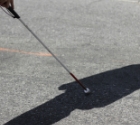 On Going Blind
On Going Blind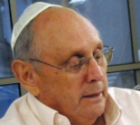 Leyland Goss 1936 – 2008
Leyland Goss 1936 – 2008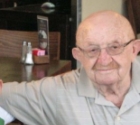 Max Geffen 1924 – 2008
Max Geffen 1924 – 2008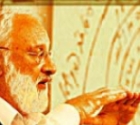 Kabbalah For All
Kabbalah For All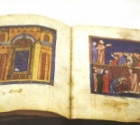 Haggadot
Haggadot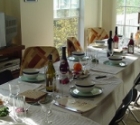 Passover 5767 ...The Holiday of Freedom
Passover 5767 ...The Holiday of Freedom Johanan Herson
Johanan Herson